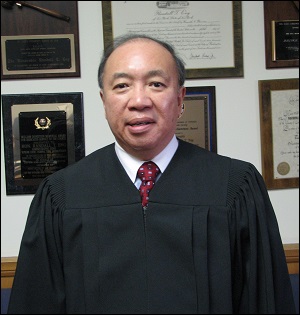Judicial Offices
Presiding Justice – Appellate Division, Second Department
Appointed by Governor Andrew Cuomo October 1st, 2012
Associate Justice – Appellate Division, Second Department
January 2008 – September 2012
Administrative Judge – Queens County
Supreme Court – Criminal Term
March 2007 – January 2008
Justice of the Supreme Court of the State of New York
January 1991 – March 2007
Assigned to Criminal Term – Queens County Supreme Court
Criminal Court of the City of New York
September 1983 – December 1990
Acting Justice of the Supreme Court
1988-1990
Other Professional Experience
Correction Department – City of New York
Inspector General 1981 – 1983
Deputy Inspector General 1980 – 1981
Office of the District Attorney – Queens County
Assistant District Attorney 1973 – 1980
Adjunct Professor of Law – St. John’s University School of Law
1997 – 2001
Military Experience:
Colonel, Judge Advocate General’s Corps,
New York Army National Guard
State Judge Advocate, retired
Admission to the Bar
State of New York – 1973
State of California – 1978
U.S. District Court E.D.N.Y. – 1975
U.S. District Court S.D.N.Y. – 1975
U.S. Court of Appeals – 2d Circuit – 1978
U.S. Court of Military Appeals – 1978
Supreme Court of the United States – 1978
Education
New York City Public Schools
State University of New York at Buffalo
B.A. Political Science
St. John’s University School of Law, J.D
Publications & Leading Cases
People v. Harris 821 NYS3d 844
(Sept. 20, 2006)
Element of depraved indifference, as required in a prosecution for depraved indifference murder, is a culpable
mental state which requires a depraved kind of wantonness; evidence before Grand Jury was legally insufficient
mandating dismissal of depraved indifference murder count in “twin-count” indictment.
People v. Valerio N.Y.L.J., Sept. 8, 2006
Where defendant, in custody, initiates a conversation with the police and the detective’s response could not
reasonably have been anticipated to evoke a statement from the defendant, the statement will not be
suppressed as the police are not required to silence a “chatterbox.”
People v. Chin N.Y.L.J., pg. 1, Col. 4, Nov. 1, 2000
“Collateral estoppel” applied to preclude evidence of “force” in rape trial.
Matter of Marvin B 167 Misc. 2d 904
Allowed the appointment of an independent psychiatrist for petitioner at an Article 330 retention hearing.
People v. Franco 160 Misc. 2d 114, aff’d 196 AD2 357, aff’d 86 NY2d 493
Where People elect to represent charges to a second Grand Jury which are already contained in an indictment
voted by a prior Grand Jury, and the second Grand Jury returning a “no-true bill,” the second Grand Jury’s
determination creating a “legal impediment” to conviction (CPL 210.20(1)(h) requiring dismissal of indictment.
People v. Bhatt 160 Misc. 2d 973
In order to effectuate the Medicare program and prevent fraud, an exception to the physician-patient privilege
under CPLR 4504(a) is created.
People v. Lincoln 159 Misc. 2d 242
Prosecutor impairs integrity of Grand Jury proceeding by instructing Grand Jury to ignore exculpatory evidence.
People v. DeStefano N.Y.L.J., pg. 31, Col. 4, April 20, 1998
Holding that speedy trial protection applies to defendants not charged with homicide but “joined” with other
defendants that are charged with homicide.
People v. Boykin 135 Misc. 2d 341
Held that it is essential that an accusatory instrument charging the crime of menacing contain a non-hearsay
allegation derived from a victim substantiating.

